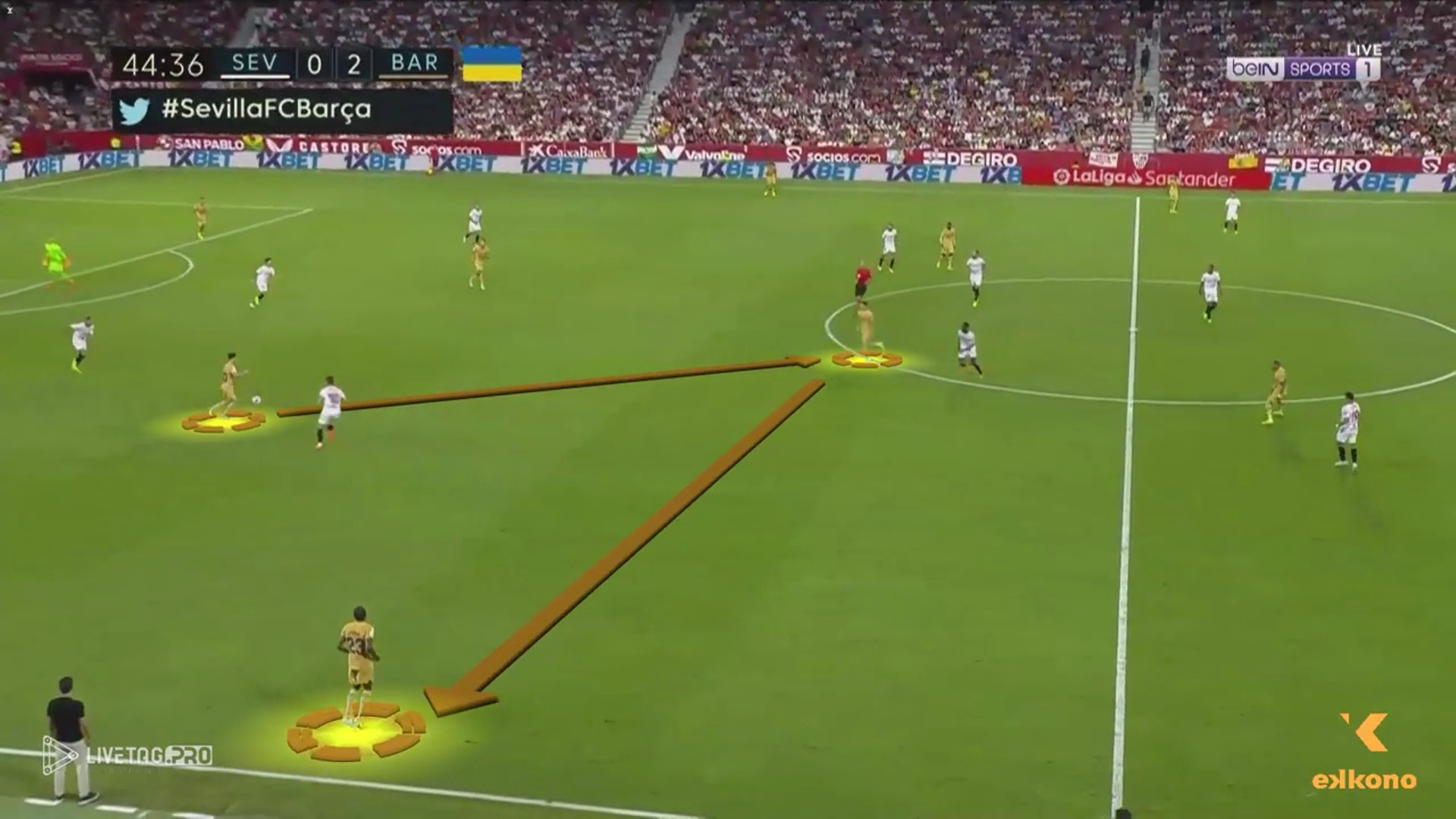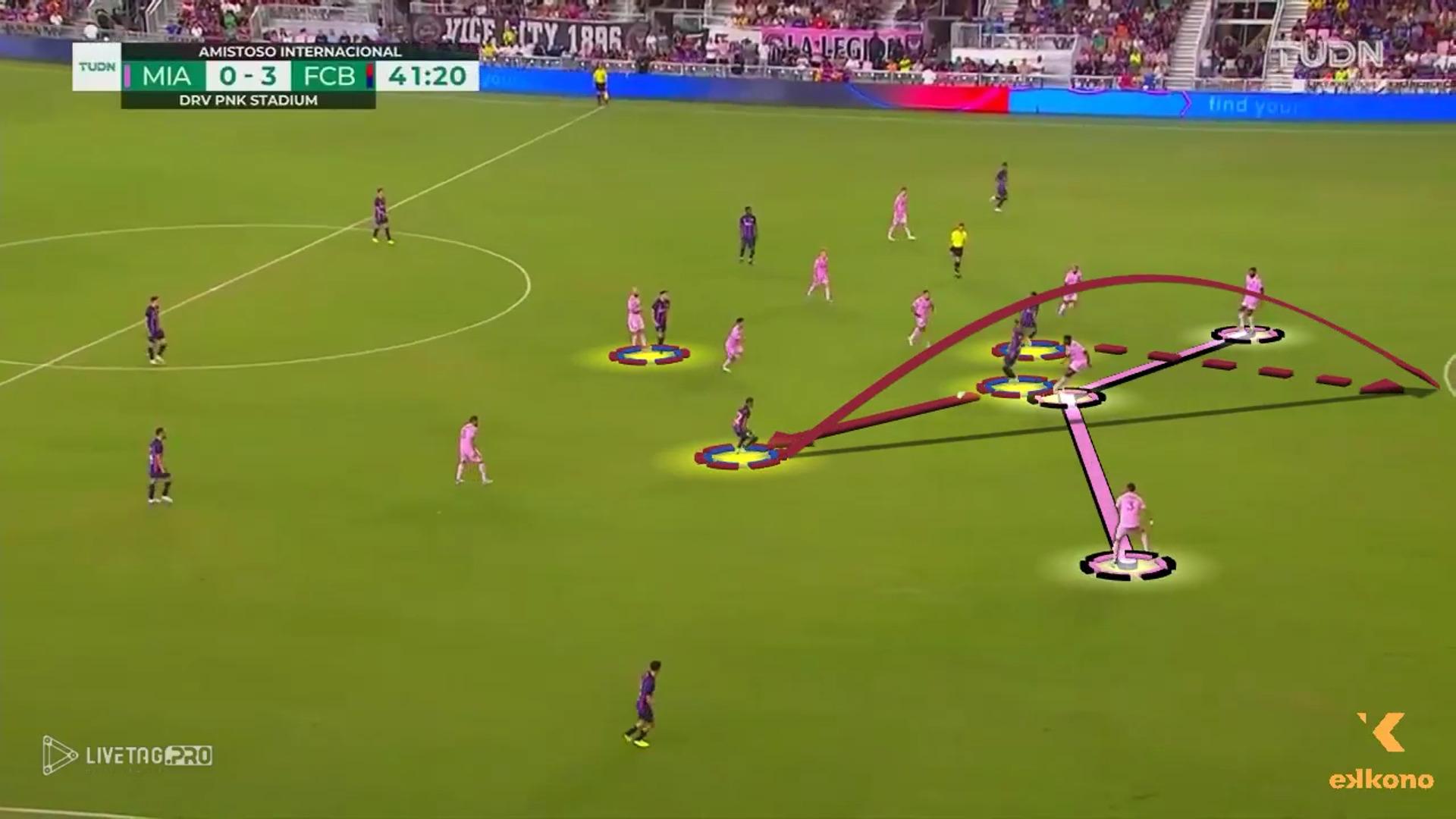
The Third Player Concept
One of the most effective principles in team play is using the third player. This tactical idea appears frequently in modern football and gives teams a simple way to progress with the ball. By creating a free man through triangulation, it helps generate an advantage that can be exploited to move forward or attack.The third player (or third man) play refers to a passing combination where the ball is played to a free player through a link player, who may be under pressure or not in an advantageous position to progress directly.
In this article, we will see how this principle applies in two key areas: build-up play under pressure and attacks against a mid-block.
Third Player Concept in Build-Up Play to Break the Press
In modern football, many teams press aggressively, often through zonal systems rather than strict man marking. When this happens, there is always a free teammate somewhere on the pitch. The third player helps the team connect with that free option.
Here’s how it works: when the direct passing line to the free teammate is blocked, another player, often a winger, drops to receive. With a quick one-touch pass, this supporting player links the ball to the teammate in space, who can now progress forward.
For the action to succeed, the free player must stay patient and hold his position instead of moving closer to the ball. By doing so, he receives with time and space to drive forward, break the press, and help the team create numerical superiority.

Third player in Build up
In this action, we see how Lewandowski (ST) drops to receive a pass from Gavi (AM) to pass it to the free player, Koundé (RB).
Using Third Man Runs to Create Space Against a Mid-Block
Against an opponent defending in a medium block, finding space becomes more difficult. Once again, the third-player principle helps teams overcome this challenge and break defensive lines.
Typically, the winger drops deeper to receive the ball. If the defender follows, this movement opens a gap behind the back line. A quick combination between the players can connect the ball to a teammate who then attacks the open space.
This coordinated action not only keeps possession but also allows the team to progress directly and create goal-scoring opportunities.

Third player against a mid-block
In this play, Aubameyang (ST) drops to receive from Nico (HM) and plays a one-touch pass to the free player Raphina (RW), creating space to progress and attack.

Third player against a mid-block
After receiving, the third player (Raphina) receives the ball and with a quick one-touch pass, he connects with Ansu Fati (LW) that attack the spaced generated by Aubameyang (ST).
“THE THIRD PLAYER CONCEPT IS ONE OF THE SIMPLEST AND MOST EFFECTIVE WAYS TO CREATE SUPERIORITY AND PROGRESS WITH THE BALL IN MODERN FOOTBALL”
Conclusion
The third-player principle is a simple yet powerful tool that improves both build-up and attacking play. Whether escaping pressure near your own goal or unlocking compact defenses higher up the pitch, this tactical concept provides clear solutions that are easy to train and apply in real matches.
When practiced consistently, it becomes a key element of modern football methodology and player development.

